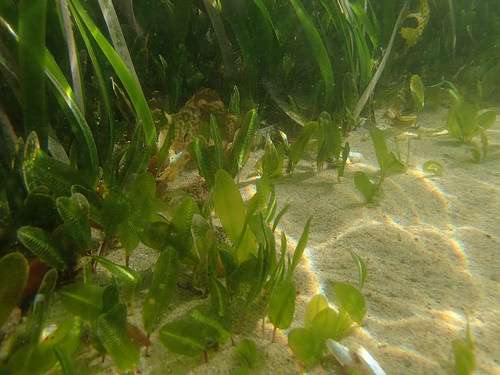Tropical seagrass examined for light pressures

Research into seagrass susceptibility to dredging activities has revealed exactly how fragile some of the tropical marine plants species are when faced with a decreased level of light.
The findings, presented at the 2015 WA Marine Science Institute Conference, form one avenue of research of the Dredging Science Node, one of two of Australia's largest marine programs, the second being the Kimberley Marine Research Program
The Dredging Science Node is meant to help assess marine dredging proposals.
According to previous research, dredging impacts seagrass through mechanisms such as reduced light availability and burial under deposited sediments.
Part of the seagrass research project aimed to determine whether the seagrasses had the ability to tolerate changes in light availability and sediment burial or whether they had the ability to recover from pressures.
UWA researcher John Statton is involved in the laboratory experiments being undertaken as part of a subproject to test pressure response relationships of tropical seagrasses to dredge pressures.
Speaking at the conference, he said they developed a large-scale seagrass research facility at UWA to test the effects of light reduction and sediment burial on seagrass species Cymodocea serrulata, Halodule uninervis and Halophila ovalis.
Tank set-up enables builds seagrass stockpile
"Twelve large 2500L tank systems have been built inside the facility and each of these is an independent experimental unit with multi-storage filtration," Mr Statton said.
"Because of these features we have been able to successfully grow multiple species of seagrasses over several months."
Mr Statton and his team wanted to know how these plants were responding to different levels of pressures, including lack of light.
During the first experiment, species were exposed to six levels of light reduction.
All plants in high light treatments, or 100 and 60 per cent surface irradiance (SI), survived and grew over 12 weeks.
However, as the light was reduced to the lowest SI at four per cent, H. uninervis and C. serrulata were trending to complete mortality after 12 weeks.
Addressing the conference on Monday, Western Australia's Chief Scientist Professor Peter Klinken said the state should take steps to understand unique biology resources instead of focusing primarily on geological resources.
He praised yesterday's launch of the "extremely impressive" Blueprint for Marine Science 2050 which identifies knowledge gaps needed to improve productivity off Australia's western coast.
Provided by Science Network WA




















